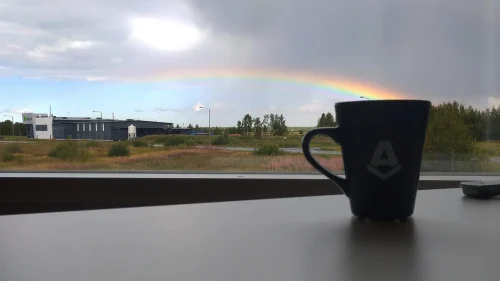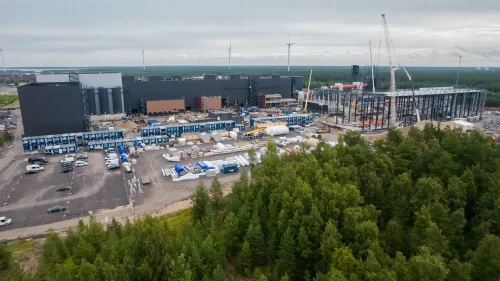Construction known for their demanding and physically demanding work, where safety at work is always at the centre. The risks are real in everyday life on site: heavy lifting, working at height, moving equipment and variable weather conditions. In this environment, every accident prevented is a win and every step forward in safety is significant.
Anfra has invested heavily in safety at work over the past few years, and the results speak for themselves. Measured in July 2025 LTIF accident frequency (Lost Time Injury Frequency) was only 2,79 for the previous 12 months. This is significantly lower than the average for the construction sector, which makes the achievement exceptional.
What is LTIF and why is it important?
LTIF meter shows the number of accidents resulting in at least one day's absence per million hours worked. It is an internationally used indicator to compare safety levels in different sectors and companies.
In the construction sector, the LTIF figure is often double or triple the current Anfra result. This means that Anfra has managed to keep the safety of its employees at a significantly better than average level, which translates into less absenteeism, better well-being at work and increased confidence in the eyes of staff and customers alike.
Three cornerstones for an exceptionally low accident rate
1. Long-term development of safety management
Anfra's safety culture has not been created overnight. Safety management has been systematically developed over the years, reacting to and preventing accidents.
In practice, this means, among other things:
-
Regular safety rounds and risk assessments
-
Continuous updating of site safety plans
-
Active presence of management on sites in safety matters
-
Safety training and induction for all employees
Management commitment has been crucial: security is not a separate issue, but an integral part of day-to-day project management.
2. Customer expectations in HSEQ matters
Customers in the construction sector are increasingly paying more attention to their suppliers' HSEQ-(Health, Safety, Environment, Quality). Anfra has responded by systematically improving its safety and quality practices, thereby raising its own standards.
When customers expect a high level of safety, it encourages the company to keep the bar high every day. This means, for example:
-
Transparent reporting of security breaches
-
Common safety objectives from the start of the project
-
Taking safety into account already at the tender and design stage
3. Committed and active staff
A safety culture does not come from the top - it comes from the commitment of all staff. At Anfra, employees actively take responsibility for their own safety and that of their colleagues.
Practical examples include:
-
Safety observations made by employees, which are discussed together
-
The possibility to stop work immediately if safety is at risk
-
A positive feedback culture that encourages good safety performance
This team spirit is reflected in the fact that safety is not just the responsibility of management or the HSEQ team, it is everyone's business.
What lessons can be learned for the whole construction sector?
Our example shows that safety at work is an investment that pays for itself in many ways. With fewer accidents:
-
Better adherence to site schedules
-
Reduced absenteeism and substitutions
-
Improved quality and efficiency of work
-
Increasing company reputation and customer satisfaction
In the construction sector, where competition is fierce and project schedules are tight, a good safety record can also become a significant competitive advantage, especially for demanding projects.
Looking to the future
Although the LTIF ratio of 2.79 is excellent, we are not satisfied. Safety work is a continuous process, where every day and every site is another opportunity to learn, develop and improve.
Priorities for the future include:
-
Using digitalisation for security intelligence and reporting
-
Developing proactive indicators beyond accidents
-
Closer cooperation with customers and subcontractors on safety issues
Summary
Anfran exceptionally low LTIF accident frequency is the result of persistent hard work, high customer expectations and committed staff. It is proof that excellence can be achieved in the construction sector. safety at work, when it is given priority.
A safe construction site is a human duty, but it is also a smart business choice. With our success, we want to encourage the whole industry to set the bar higher, because every worker deserves to return home healthy at the end of the working day.








